
In the evolving landscape of web development, decoupled architectures and headless content management systems (CMS) have emerged as powerful solutions for delivering content-rich experiences across multiple channels. Building website themes that are fully compatible with headless CMS platforms unlocks new levels of flexibility, performance, and scalability. In this guide, we will explore how to design and develop headless CMS-friendly website themes, diving into key considerations, tools, frameworks, and best practices to ensure a seamless and future-proof implementation.
Understanding Headless CMS

A headless CMS is a backend-only content management system that provides content via an API, without enforcing a frontend presentation layer. Unlike traditional, monolithic CMS platforms, headless CMS platforms decouple content storage and management from the rendering layer. This separation allows developers to choose any frontend framework or technology stack, such as React, Vue, or Svelte, to consume the CMS API and render dynamic content. Popular headless CMS platforms include Contentful, Strapi, Sanity, and Prismic. Learn more about 10 Best Responsive Website Themes.
Benefits of Headless CMS-Friendly Themes
- Flexibility: You can use modern frontend frameworks and tools without the constraints of a monolithic CMS.
- Performance: Decoupled architectures enable faster page loads by delivering only the required data via APIs and optimizing the rendering pipeline.
- Scalability: Separating the frontend from the backend simplifies horizontal scaling and ensures that each layer can be independently optimized and maintained.
- Omnichannel Delivery: Content stored in a headless CMS can be published across websites, mobile apps, IoT devices, and other digital touchpoints.
Key Considerations for Building Themes
- Component-Based Design: Structure your theme using reusable UI components that map to content models in the CMS.
- API Integration: Plan the data fetching strategy—server-side rendering (SSR), static site generation (SSG), or client-side hydration—based on your project requirements.
- Content Modeling: Collaborate with content strategists to define content types and fields that align with your theme’s design and functionality.
- Theming and Customization: Offer easy ways for users to customize colors, typography, and layout options using configuration files or a UI settings panel.
Step-by-Step Development Guide
- Set Up the Headless CMS: Create your project, define content models, and configure environments.
- Initialize the Frontend Repository: Choose a framework (Next.js, Nuxt, Gatsby) and scaffold the project with theme folder structure.
- Design the Component Library: Build atomic UI components (buttons, cards, navigation) and organize them into a design system.
- Implement Data Fetching: Write API clients or use SDKs to fetch content during build time or runtime, and pass data to components.
- Style the Theme: Use CSS-in-JS, Sass, or utility-first frameworks like Tailwind CSS to style your components in a scalable way.
- Enable Customization: Integrate theme configuration files or a visual editor plugin to allow end-users to adjust design tokens and settings.
- Test Across Environments: Perform unit, integration, and end-to-end tests on different screen sizes and scenarios to ensure compatibility.
- Optimize and Deploy: Set up CI/CD pipelines to automate builds, optimize images, minify assets, and deploy to hosting platforms like Vercel or Netlify.
Tools and Frameworks
- Frontend Frameworks: Next.js, Nuxt.js, Gatsby, Sapper, Astro
- UI Libraries: Material UI, Chakra UI, Tailwind CSS, Styled Components
- API Clients and SDKs: GraphQL clients (Apollo, URQL), REST clients (Axios, Fetch API)
- Design Systems: Storybook, Framer, Figma for collaborative design-to-code workflows
- Deployment Platforms: Vercel, Netlify, AWS Amplify, Google Cloud
Advanced Customization Techniques
For truly dynamic themes, consider integrating JSON schema-driven configurations that allow end-users to adjust layout templates, color schemes, and font pairing without writing code. Tools like Theme-UI or custom-built theme parsers can read these schemas during the build process and output modified CSS or component props. You can even expose a live preview within the CMS admin interface using iframe embeds or plugin APIs, offering real-time visual feedback as users tweak settings.
Another powerful approach is plugin-based theming, where you define extension points in your theme codebase. Developers can create plugins to add functionality like custom widgets, forms, or analytics scripts. By standardizing plugin APIs and versioning, you ensure that third-party contributions can be easily integrated, updated, or removed, reducing maintenance overhead.
Security Considerations
When building decoupled themes, it’s critical to secure your API endpoints and ensure proper authentication and authorization. Implement role-based access control (RBAC) within your CMS to limit who can publish or modify content. Use environment variables to store API keys and secrets, and avoid exposing sensitive credentials in your client-side code.
Additionally, validate and sanitize all input data fetched from the CMS, especially if you allow user-generated content. Use libraries like DOMPurify to prevent XSS attacks when rendering rich text fields. On the hosting side, enable HTTPS, set up Content Security Policies (CSP), and monitor for potential security vulnerabilities using automated scanning tools.
Future Trends in Headless Theme Development
The headless ecosystem continues to evolve rapidly. Look out for JAMstack innovations that further blur the line between static and dynamic content delivery. Edge computing and serverless functions are becoming first-class citizens in theme development, enabling personalized and geolocated content at the network edge. Emerging protocols like WebAssembly (WASM) and streaming APIs will also shape how themes handle compute-heavy tasks like image processing or custom middleware.
Finally, AI-driven design assistants are on the horizon, promising to automate theme generation based on content characteristics, brand guidelines, and user behavior data. By incorporating AI APIs, you can add features like automatic color palette generation, layout suggestions, and content personalization, taking your headless CMS-friendly themes to the next level.
Content Modeling Best Practices
Effective theme development starts with well-structured content models. Collaborate with content strategists, designers, and stakeholders to map out content types, relationships, and fields before writing any code. Use modular, reusable content blocks like hero banners, testimonials, and feature lists to maximize flexibility. Define custom validation rules and default values to help content editors maintain consistency.
When exposing relationships between content types (e.g., author profiles or related articles), design your API queries to minimize over-fetching. GraphQL can be especially powerful for this, allowing you to request nested data structures with precision. Always document your content models and keep your CMS schema in sync with your theme’s data fetching logic to prevent runtime errors.
Integrating Third-Party Services
Headless themes often rely on external services for functionalities such as search, analytics, e-commerce, and marketing automation. Plan for seamless integrations by defining extension points in your code where you can plug in third-party scripts or APIs. For example, implement a search UI component that can switch between Algolia, Elasticsearch, or Swiftype based on configuration.
Similarly, integrate analytics services like Google Analytics, Plausible, or Mixpanel by abstracting your tracking code into reusable modules. For e-commerce, consider platforms like Shopify or Snipcart and ensure your theme can render dynamic product listings and shopping carts. By decoupling these integrations from your core theme, you maintain a clean, modular codebase that’s easy to extend or replace.
Best Practices for SEO and Performance

- SEO-Friendly Routing: Generate clean URLs based on content slugs and configure dynamic routes.
- Meta Tags and Open Graph: Dynamically populate SEO metadata using your CMS fields to enhance search visibility and social sharing.
- Image Optimization: Use responsive image techniques, lazy loading, and CDNs to deliver compressed and appropriately sized assets.
- Code Splitting and Caching: Leverage code splitting, prefetching, and CDN caching to minimize JavaScript payloads and reduce time to first byte.
- Accessibility: Ensure your theme components adhere to WCAG guidelines, include semantic HTML, and support keyboard navigation.
Case Study: Portfolio Theme with Strapi
To illustrate the process, let’s build a portfolio theme using Strapi as the headless CMS and Next.js for the frontend. First, we define content types like “Project,” “Blog Post,” and “Author” in Strapi’s admin panel. Then, scaffold a Next.js project, install the Strapi SDK, and create pages for each content type. We design a component library for cards, grids, and typography, and fetch data at build time using getStaticProps. For theming, we set up a Tailwind CSS config file, exposing color palettes and spacing scales in a theming.json file. Finally, we configure SEO metadata and deploy the site to Vercel, ensuring blazing-fast performance and global availability.
Conclusion
Building website themes that are compatible with headless CMS platforms is a strategic investment in flexibility, performance, and scalability. By following component-based design principles, planning API integration thoughtfully, and leveraging modern tools and frameworks, you can create themes that empower content creators and developers alike. Embrace best practices for SEO, performance, and accessibility to deliver exceptional digital experiences across channels. Start exploring headless CMS-friendly theme development today, and future-proof your web projects for the ever-changing landscape of the internet.


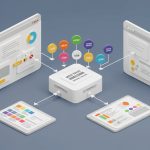
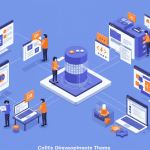

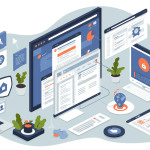

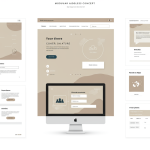

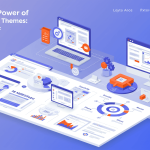
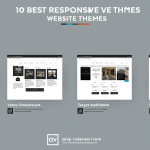





No Comments